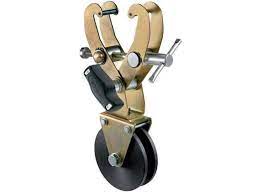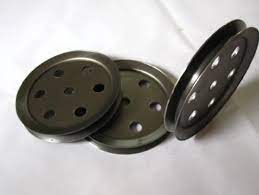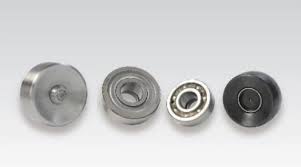Product Description
Gravity die-casting
Specification:
Gravity die casting
1. Open mould
2. Die casting
3. Casting (trim, grind, drill)
4. Surface treatment( anodize, chrome-plated)
Gravity die casting
Technological processed: Open mould— die casting —-casting (trim, grind, drill) —surface treatment
Gravity die casting detail:
1. Material: Aluminum (A380, A360, ADC12, ADC10) according to JISH5302: 2006 &ASTM
2. Process: Trim grind, drill, CNC
3. Surface treatment: Shot blashing, sandblasting or painting, anodize, electroplating, chrome-plated or all per customers’ requirement
Gravity die casting design & mold manufacture
2. Use the software: Auto CAD, RPO/Engineer, Solidwork, UG
3. Mold design
4. Trial the mold
5. Machine: EDM, CNC, Grinding Machine, Milling Machine, Tuning Machine, Wire Cutting Machine, Photo Engraving, Chemical Milling, Welder
| Item | description |
| type | Aluminum die casting Zinc die casting Magnesium die casting |
| manufature | HangZhouxinlong CHINAMFG trade co., ltd |
| equipment | Cold chamber die casting machine |
| Machine capacity | 100T-800T |
| process | Tooling making: 20-30days tooling leadtime Casting: remove all burrs & sharp edges Machinng: CNC maching, milling, drilling, trimming, cutter, griding, wire cutter etc Surface treatment: shot blasting, sand blasting Polishing, powder coating, painting, , polishing, powder coating, chrome plating, nickel plating, passivating |
| Quality control | first checked after cast from die casting machine second checked by the warehouse people third checked after machining and surface finish. We check piece by piece each time |
| package | inner packing: PE bag or air bubble bag outer packing: double corrugated carton as per customers’ requirment |
| advantage | OEM service offered Send us you RFQ in details! We produce strictly according to customer’ s design and machining request. |
| Condition: | New |
|---|---|
| Certification: | CE, RoHS, GS, ISO9001 |
| Standard: | DIN, ASTM, GOST, GB, JIS, ANSI, BS |
| Customized: | Customized |
| Material: | Aluminum |
| Application: | Metal Recycling Machine, Metal Cutting Machine, Metal Straightening Machinery, Metal Spinning Machinery, Metal Processing Machinery Parts, Metal forging Machinery, Metal Engraving Machinery, Metal Drawing Machinery, Metal Coating Machinery, Metal Casting Machinery |
| Samples: |
US$ 1/Piece
1 Piece(Min.Order) | |
|---|
| Customization: |
Available
| Customized Request |
|---|

Can spinning pulleys withstand continuous use and high-speed rotation?
Spinning pulleys are designed to withstand continuous use and high-speed rotation, provided they are properly designed, manufactured, and maintained. Here are the key factors that contribute to the ability of spinning pulleys to handle these conditions:
1. Material Selection:
Spinning pulleys are typically made from durable and robust materials such as steel or aluminum alloys. These materials offer high strength, fatigue resistance, and the ability to withstand the stresses and forces generated during continuous use and high-speed rotation. The specific material selection depends on the application requirements, including the load capacity and environmental conditions.
2. Engineering and Design:
The engineering and design of spinning pulleys are crucial to their ability to withstand continuous use and high-speed rotation. Factors such as the pulley’s diameter, width, groove shape, and the number of grooves are optimized to ensure efficient power transmission, minimize belt wear, and handle high rotational speeds. The pulley’s structural integrity, balance, and weight distribution are carefully considered to prevent vibrations and maintain smooth operation.
3. Load Capacity:
Spinning pulleys are designed to handle specific load capacities, which determine their ability to withstand continuous use. The load capacity depends on several factors, including the material strength, pulley dimensions, and the intended application. Manufacturers provide load capacity ratings to guide the selection of pulleys suitable for the required load and rotational speed.
4. Lubrication and Bearing Systems:
Proper lubrication is essential to reduce friction and heat generation in spinning pulleys. Lubricants minimize wear and ensure smooth rotation, even during continuous use and high-speed operation. Additionally, spinning pulleys often incorporate bearing systems that support the rotational motion and distribute the load evenly. High-quality bearings and adequate lubrication contribute to the pulleys’ ability to handle continuous use and high-speed rotation.
5. Maintenance Practices:
Regular maintenance is important to ensure the longevity and performance of spinning pulleys. Routine inspections, lubrication, and checks for wear or damage help identify and address any issues promptly. Proper maintenance practices, including cleaning, tension adjustments, and bearing maintenance, contribute to the pulleys’ ability to withstand continuous use and high-speed rotation.
6. Application Considerations:
The ability of spinning pulleys to withstand continuous use and high-speed rotation also depends on the specific application and operating conditions. Factors such as the intensity and duration of use, temperature variations, and environmental factors play a role. Pulleys designed for heavy-duty industrial applications may have different specifications compared to those used in lighter-duty or consumer-grade equipment.
In summary, spinning pulleys can indeed withstand continuous use and high-speed rotation when they are appropriately selected, engineered, and maintained. The choice of durable materials, optimized design, load capacity considerations, proper lubrication and bearing systems, regular maintenance, and application-specific factors all contribute to the pulleys’ ability to handle these demanding conditions.

How do you select the right spinning pulley configuration for a specific task?
Selecting the right spinning pulley configuration for a specific task involves considering several factors to ensure optimal performance and compatibility. Here are the key steps in selecting the appropriate spinning pulley configuration:
1. Determine Power Requirements:
Assess the power requirements of the task or system where the pulley will be used. Consider factors such as the torque or rotational force needed, power transmission efficiency, and desired speed range.
2. Identify Belt Type and Size:
Determine the type and size of the belt or rope that will be used with the pulley. Different pulley configurations are designed to work with specific belt types, such as V-belts, timing belts, flat belts, or ropes. Ensure that the pulley and belt are compatible in terms of size, width, and groove design.
3. Consider Speed and Torque Requirements:
Evaluate the required rotational speed and torque for the task. Depending on the application, you may need to select a pulley configuration that offers speed variation options, such as step pulleys, or one that provides precise synchronization, such as timing pulleys.
4. Assess Environmental Factors:
Take into account the environmental conditions in which the pulley will operate. Consider factors such as temperature, humidity, dust, and exposure to chemicals or corrosive substances. Choose a pulley configuration that can withstand the anticipated environmental conditions without compromising performance or durability.
5. Evaluate Belt Tension and Alignment:
Consider the requirement for proper belt tension and alignment in the system. Depending on the application, you may need to incorporate idler pulleys or crowned pulleys to maintain optimal belt tension and prevent belt slip or misalignment.
6. Seek Manufacturer Recommendations:
Consult the manufacturer’s guidelines, specifications, and technical documentation for the specific pulley configuration options they offer. Manufacturers often provide recommendations based on the intended application, power requirements, and belt compatibility.
7. Consider System Integration:
Ensure that the selected spinning pulley configuration can be easily integrated into the existing system or machinery. Consider factors such as mounting options, shaft size compatibility, and overall system design.
8. Consult Experts if Needed:
If you are unsure about the appropriate spinning pulley configuration for a specific task, consider consulting experts, engineers, or suppliers who specialize in power transmission or the specific industry. They can provide valuable insights and recommendations based on their expertise and experience.
By following these steps and considering the various factors involved, you can select the right spinning pulley configuration that meets the specific requirements of your task or system. It is essential to ensure compatibility, efficiency, and reliability to achieve optimal performance and longevity.

Can you explain the key components and design features of a spinning pulley?
A spinning pulley consists of several key components and design features that allow it to function effectively in mechanical systems. Here’s a detailed explanation of these components and features:
1. Hub:
The hub is the central part of the spinning pulley. It is typically a solid cylindrical structure that provides support and stability to the pulley. The hub is mounted on a shaft or axle, allowing the pulley to rotate freely.
2. Rim or Groove:
The rim or groove is the outer edge of the spinning pulley. It is specifically designed to accommodate a rope, belt, or cable. The rim is usually rounded or flat, depending on the application. Its primary function is to guide and retain the rope or belt during operation, preventing slippage and ensuring efficient power transmission.
3. Diameter:
The diameter of a spinning pulley refers to the distance across its outer rim. It plays a crucial role in determining the speed and mechanical advantage of the pulley system. Larger diameters result in increased speed but reduced mechanical advantage, while smaller diameters provide higher mechanical advantage at the expense of speed.
4. Material:
Spinning pulleys are typically made from durable materials such as metal, plastic, or composite materials. The choice of material depends on factors such as the load capacity, environment, and specific application requirements. Metal pulleys, such as steel or aluminum, are commonly used in heavy-duty applications, while plastic or composite pulleys are preferred in lighter-duty or corrosive environments.
5. Bearings:
Bearings are essential components in spinning pulleys as they enable smooth rotation. They reduce friction between the rotating hub and the shaft, allowing the pulley to spin with minimal resistance. Common types of bearings used in spinning pulleys include ball bearings and roller bearings.
6. Mounting Mechanism:
Spinning pulleys are typically mounted on a shaft or axle, which allows them to rotate freely. The mounting mechanism may involve set screws, keyways, or other fastening methods to secure the pulley to the shaft. The design of the mounting mechanism should ensure proper alignment and prevent slippage during operation.
7. Flanges:
Some spinning pulleys feature flanges on either side of the rim. Flanges are raised edges or rims that help keep the rope or belt aligned and prevent it from slipping off the pulley during operation. Flanges provide additional guidance and stability, particularly when the pulley is subjected to lateral forces or when the rope or belt is under tension.
8. Tensioning Mechanism:
In certain applications, spinning pulleys may include a tensioning mechanism. This mechanism allows for the adjustment of tension in the rope or belt, ensuring optimal performance and preventing slippage. Tensioning mechanisms can involve springs, levers, or other devices that allow for easy adjustment and maintenance of tension.
These are the key components and design features of a spinning pulley. The combination of these elements enables the pulley to effectively transmit power, change the direction of force, and create mechanical advantage in various mechanical systems.


editor by CX
2023-11-21